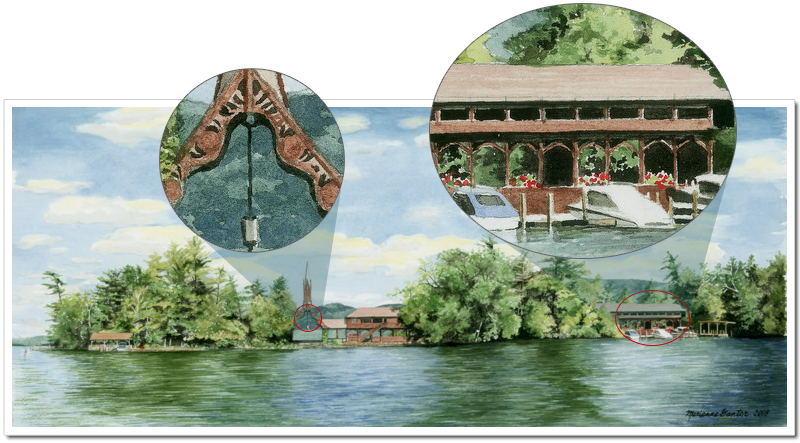
|
The Giclée Print Process for Watercolor Art
Giclée Fine Art Prints: The end result is exceptional and brilliant,
faithful to the original's color, vibrancy, fine detail and texture, and virtually
indistinguishable to Marianne's original paintings.
Three Reasons Our Prints Look Like Marianne's Originals:
1. Ultra High Resolution Digital Scanning Technology
2. Giclée Printer Technology
3. The Finest German Watercolor Paper
1. Digital Scanning Technology:
The first and most critical step in producing a giclée is creating a high
resolution, digitized copy of the original artwork. By utilizing the latest
advances in professional digital scanning technology, we're able to create
digitized computer images of Marianne's original watercolor artwork at
stunning levels of detail and clarity.
|

Resolution tests on Marianne's "Three Brothers Island" and "West Dollar Island" paintings have shown no loss
of quality or detail when printing at twice and even three times the dimensions of the original watercolor.

The digital scan [above, right] at 100% digital resolution (the computer's stored interpretation of the actual watercolor)
may not look pretty.. but when scaled down to actual print size [above, left] - the result it incredibly crisp and clear!
Can you even find the buoy in the "Three Brothers Island" image above? Prepare to be impressed!
Using a large format digital studio camera mated with specialized optics
and a HID lighting system to minimize glare and reflection, we capture every
nuance of detail from even the largest of originals. These are the techniques
and equipment employed by virtually every fine art museum worldwide.
Scan resolutions of up to 1000 pixels per inch are attained. (In comparison,
computer screens are only 1/10th the resolution.) The resulting data files
are approximately 1/2 Gigabyte - that's 500,000,000 bytes!!.
Once the image is in digital format, the digital image is "fine tuned" as needed to
color correct and ensure the best possible match with the original watercolor artwork.
Proofing ensures that all of Marianne's color and detail expectations are met.
This step provides the best possible communication between artist and "atelier" and
virtually eliminates unforeseen variations. In most cases one proof and a subsequent
color correction are sufficient to create an exact color match.
2. Giclée Printer Technology:
In the giclée printing process, fine streams of pigmented inks (more than four million
droplets per second) are sprayed from jets onto specially treated fine art papers.
These unique jets are able to vary the width of the ink stream to as small as 1/100th
the width of human hair. It is this capability that gives the giclée its beauty.
We only use archival-quality inks that are both waterproof and UV fade resistant.
Meticulous calibration procedures provide stunningly consistent results. Giclée have
a higher resolution than offset lithographs and the dynamic color range is greater
than serigraphy.
3. The Finest German Watercolor Paper:
Our prints are created on Hahnemühle William Turner 300g/m watercolor rag paper - a
natural white mould-made watercolor paper with 100% rag content making it highly
archival. The paper is specially coated for excellent image sharpness and optimum
color graduation. The coating also offers a very high level of water resistance.
Hahnemühle FineArt is located Dassel, Germany, just south of Hanover in Lower Saxony.
The original paper mill began production in 1584 - over 425 years ago!
Hahnemühle's s have been proving that they superbly master the old craft:
uniquely beautiful papers are created from pure spring water and first-class pulps,
the same today as over 400 years ago.
Hahnemühle papers are acid-free, lightfast and extremely age resistant.
|

|
|

|
|
|